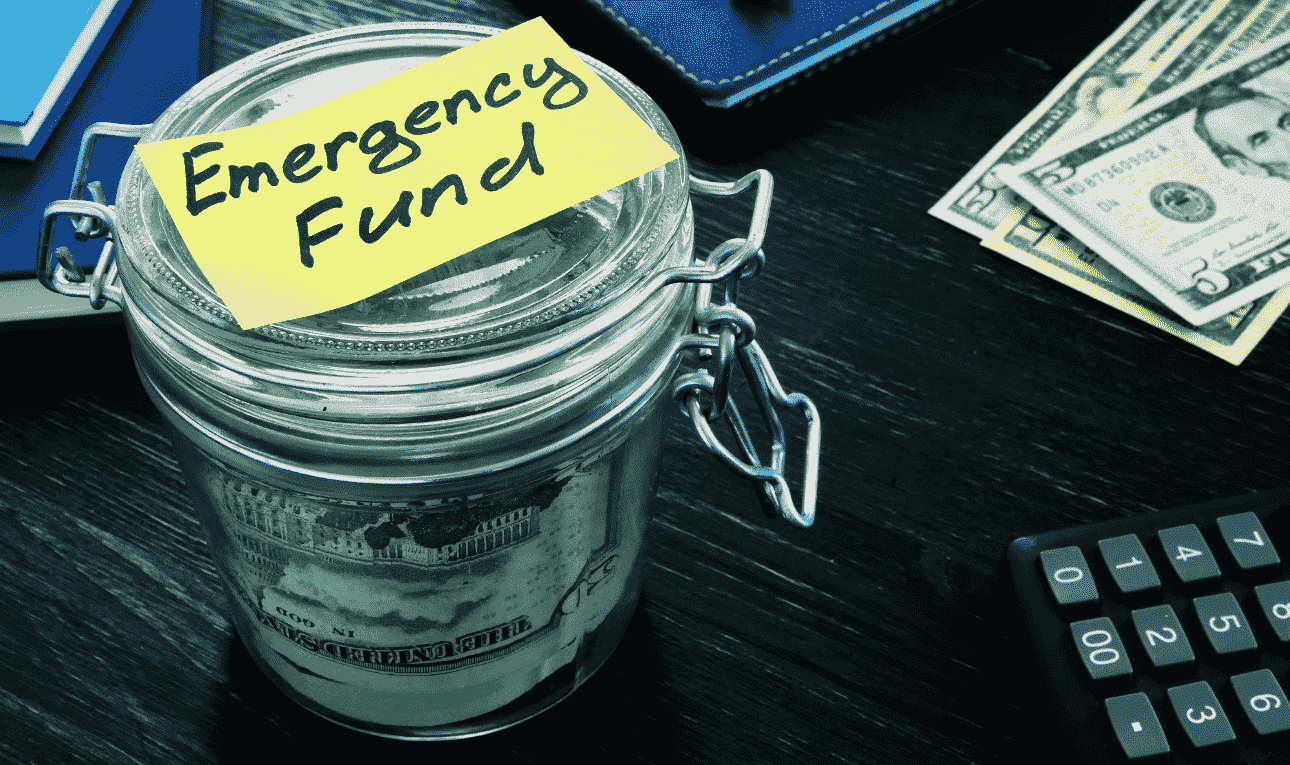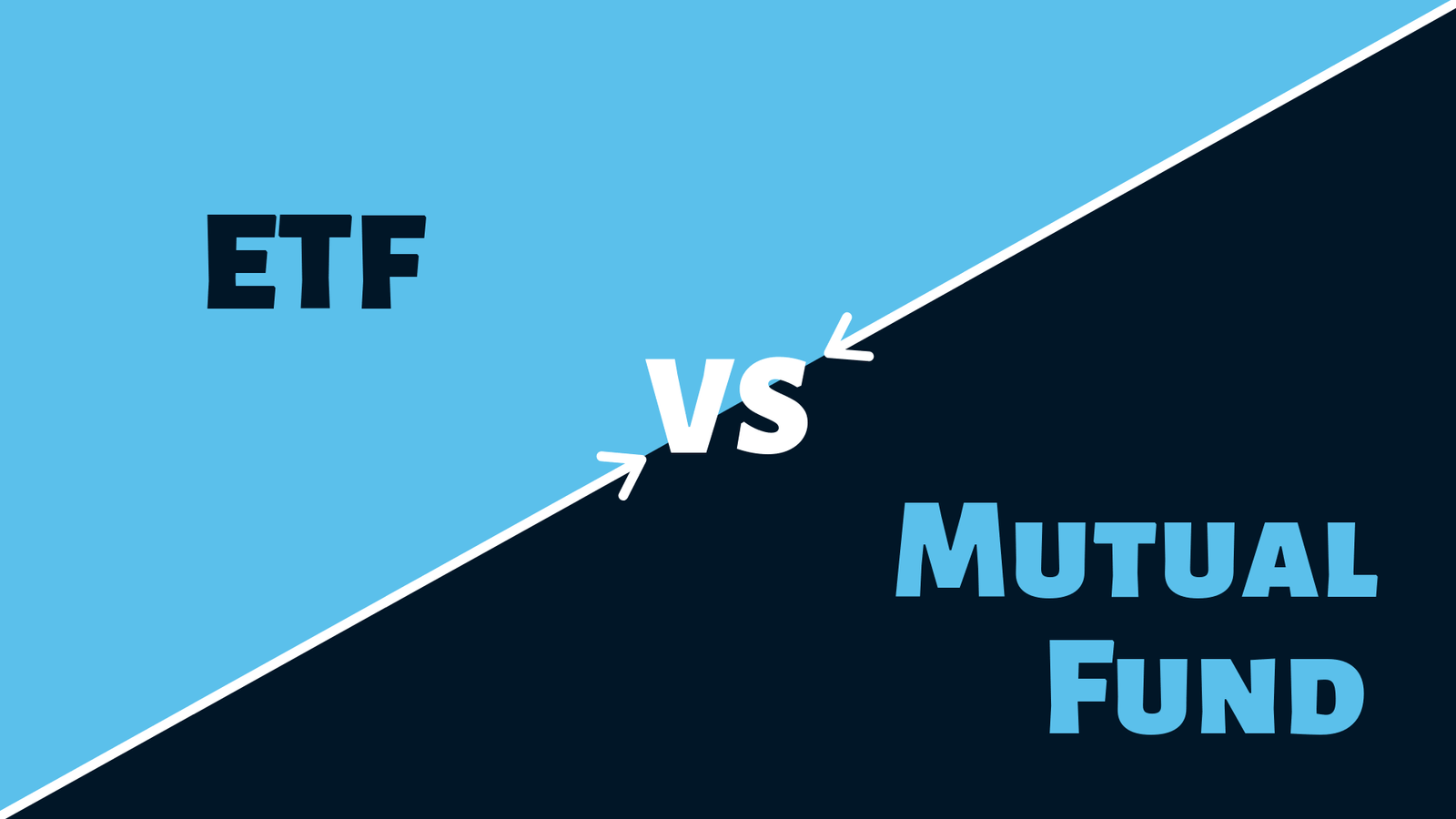Did you know that nearly 60% of Americans don’t have enough savings to cover a $1,000 emergency? This alarming figure underlines the critical need for a financial safety net. An emergency fund is indispensable for financial security, ensuring stability and tranquility in the face of unforeseen expenses or economic downturns.
Experts stress that establishing an emergency fund is a cornerstone of financial planning. It enables individuals to manage unexpected costs without succumbing to debt, safeguarding their long-term financial objectives.
Key Takeaways
- Having an emergency fund is critical for financial stability.
- It acts as a safety net against unforeseen expenses and economic downturns.
- An emergency fund is a foundational element of thorough financial planning.
- It prevents debt and supports long-term financial objectives.
- Financial security and peace of mind are significant benefits of maintaining an emergency fund.
What Is an Emergency Fund?
An emergency fund constitutes a readily accessible reservoir of capital, designed to mitigate unforeseen financial disruptions. It is an indispensable element within personal finance, enabling individuals and families to circumvent debt during unexpected expenses.
The establishment of an emergency fund equates to the creation of a financial safety net. It instills a sense of tranquility and fiscal security, empowering one to address critical expenditures in the face of job loss, medical crises, or other unforeseen calamities. The conventional wisdom advocates for accumulating reserves sufficient to cover three to six months of living costs.
- Liquidity: The funds should be easily accessible.
- Low Risk: It’s typically kept in low-risk accounts, such as savings accounts or money market funds.
- Separate Account: It’s advisable to keep the emergency fund separate from your everyday spending money.
The establishment of an emergency fund represents a cornerstone in money management. It not only acts as a buffer against financial shocks but also prevents the accumulation of debt. For those contemplating investment, the creation of an emergency fund is a wise initial step, as underscored in our guide on how to start investing with minimal capital.
In conclusion, an emergency fund is an essential instrument for financial fortitude. By grasping its significance and the methodology for its creation, individuals can enhance their preparedness for life’s unpredictabilities.
Why You Need an Emergency Fund
Life’s trajectory is inherently unpredictable, necessitating an emergency fund as a financial safeguard against unforeseen events. Such unforeseen circumstances, ranging from sudden car malfunctions to unforeseen medical expenses or unexpected job loss, underscore the importance of a financial safety net. An emergency fund serves as a bulwark against financial shocks, mitigating stress and fostering peace of mind.
The establishment of an emergency fund can dramatically diminish financial anxiety by providing a buffer against unforeseen expenses. Financial advisors advocate for accumulating 3-6 months’ worth of living expenses, highlighting its critical role in managing financial crises. An article on CNET emphasizes the significance of a substantial emergency fund, underscoring its role in covering essential expenses during periods of unemployment or other financial adversities.
Key Benefits of an Emergency Fund:
- Reduces financial stress by providing a financial cushion
- Provides peace of mind knowing you can handle unexpected expenses
- Helps avoid debt by covering unexpected expenses without needing loans
- Supports financial security and stability
By establishing an emergency fund, individuals can fortify their financial resilience against life’s unpredictable challenges. This proactive measure is indispensable for long-term financial well-being and stability.
In conclusion, an emergency fund transcends its role as a mere financial instrument; it is a cornerstone of financial security and tranquility. By prioritizing the creation of an emergency fund, one embarks on a journey towards securing a financially stable future.
How Much Should You Save?
Establishing the optimal emergency fund amount is imperative for maintaining financial equilibrium. The consensus among financial experts advocates for a reserve of 3-6 months’ living expenses. Yet, this recommendation is not universally applicable.
The precise amount to be saved is contingent upon various elements, including your earnings, monthly outlays, employment stability, and familial responsibilities. For example, individuals with a secure employment arrangement and minimal dependents might require a smaller reserve compared to those in precarious employment or with a larger family.
Factors to Consider When Calculating Your Emergency Fund
- Monthly Expenses: Enumerate your indispensable expenditures, encompassing housing costs, utility bills, food, and the minimum debt repayments.
- Job Security: Assess the reliability of your employment and the probability of unemployment.
- Dependents: If you have dependents, you may need to save more to ensure their needs are covered.
- Other Sources of Support: Consider if you have other sources of financial support, such as a partner’s income or other savings.
For instance, if your monthly expenses total $3,000 and you aim to save 6 months’ worth, your target should be $18,000. This figure may appear formidable, but by setting incremental goals, it becomes more attainable.
It is equally critical to periodically reassess and modify your emergency fund in response to shifts in your financial circumstances. This practice guarantees that you remain prepared for unforeseen expenses.
Steps to Build Your Emergency Fund
An emergency fund transcends mere savings; it serves as a critical financial safeguard against unforeseen circumstances. Establishing such a fund necessitates a steadfast commitment to savings and a profound comprehension of your fiscal objectives.
To initiate, evaluate your monthly expenditures to ascertain the requisite savings amount. Consider indispensable costs such as housing, utilities, and food. The goal should be to accumulate at least three to six months’ worth of these necessities.
Formulating a budget is an indispensable step in this endeavor. Identify opportunities to curtail non-essential outlays and redirect those funds towards your emergency reserve.
- Monitor your income and expenses to discern the allocation of your financial resources.
- Establish attainable fiscal objectives and prioritize the accumulation of your emergency fund.
- Implement automatic savings by configuring transfers to your savings account.
Adopt the following straightforward strategy:
| Step | Description | Target |
|---|---|---|
| 1. Assess Expenses | Calculate monthly essential expenses | Identify necessary expenses |
| 2. Create Budget | Allocate income towards savings | Reduce non-essential spending |
| 3. Automate Savings | Set up automatic transfers | Consistency in saving |
Adherence to these guidelines and unwavering discipline will enable the establishment of a formidable emergency fund. The essence lies in persistence and patience.
Where to Keep Your Emergency Fund
Your emergency fund necessitates a location in a savings account that is both accessible and secure. This is imperative due to the unpredictable nature of emergencies, which can necessitate immediate financial intervention. The availability of your savings can mitigate the risk of incurring debt during such unforeseen circumstances.
In the selection of a savings account for your emergency fund, a high-yield savings account is advisable. Such accounts provide superior interest rates compared to conventional savings accounts. This enables your emergency fund to accumulate value over time, while maintaining its liquidity for immediate access.
Several critical considerations are pertinent when opting for a high-yield savings account for your emergency fund:
- Interest Rate: It is essential to compare the interest rates offered by various financial institutions to secure a competitive rate.
- Liquidity: Confirm that your funds can be accessed promptly without incurring penalties or experiencing undue delays.
- Fees: Opt for accounts with minimal or no fees to optimize your savings growth.
- FDIC Insurance: Select a bank that offers FDIC insurance to safeguard your deposits up to $250,000.
- Minimum Balance Requirements: Favor accounts with low or no minimum balance requirements to preserve flexibility.
By meticulously choosing the appropriate savings account for your emergency fund, you can ensure that your capital is both accessible and accruing a competitive interest rate. This approach significantly enhances your financial security.
How to Increase Your Savings Rate

To fortify your financial base, elevating your savings rate is imperative. This necessitates a blend of tactics aimed at optimizing your savings. “The essence of attaining financial equilibrium lies not solely in saving, but in doing so with prudence,” financial gurus frequently underscore.
Enhancing your income and curtailing expenses are fundamental approaches to augment your savings. An in-depth examination of these methodologies follows.
Increasing Your Income
Augmenting your earnings can substantially bolster your capacity for savings. This can be realized through diverse avenues such as:
- Engaging in a side job or freelance endeavors
- Initiating discussions for a salary increment at your current employment
- Engaging in further education or vocational training to elevate your remuneration prospects
- Disposing of superfluous items or assets
By augmenting your income, you can redirect more resources towards savings, obviating the need for expense reductions.
Paring down on non-essential expenditures is another efficacious strategy for elevating your savings rate. This entails:
- Establishing a budget to monitor your expenditures
- Trimming back on discretionary spending
- Engaging in negotiations with service providers and subscription services
- Avoiding debt and high-interest loans
By minimizing your expenses, you liberate additional funds in your budget for savings.
Automating Your Savings
Automating your savings facilitates consistent saving. This can be achieved through:
- Configuring automatic transfers from your checking to savings or investment accounts
- Utilizing payroll deductions for savings contributions
As Suze Orman astutely observed, “Automated saving is the cornerstone of wealth accumulation.” Automating your savings streamlines the process, allowing you to build your rainy day fund effortlessly.
By integrating these strategies, you can effectively elevate your savings rate and bolster your financial resilience.
Common Obstacles to Saving
The establishment of a substantial emergency fund necessitates the surmounting of several formidable financial barriers. Many individuals encounter impediments that severely hinder their capacity for effective savings.
A lack of discipline in the realm of savings emerges as a primary challenge. The adherence to a savings regimen proves arduous, exacerbated by the immediacy of financial exigencies or the allure of discretionary spending.
Unexpected expenses constitute another formidable barrier. Incidents such as vehicular malfunctions, unforeseen medical expenditures, or employment termination can swiftly erode savings, rendering the accumulation of an emergency fund a daunting task.
A low income further complicates the endeavor of savings. The scarcity of financial resources renders the allocation of funds for savings a formidable challenge, necessitating a delicate balance between essential expenditures and savings goals.
Strategies to Overcome Saving Obstacles
- Automate your savings by setting up automatic transfers from your checking account to your savings or emergency fund.
- Create a budget that prioritizes savings and tracks your expenses to identify areas for reduction.
- Build an emergency fund gradually, starting with small, achievable targets.
By comprehending these prevalent obstacles and deploying strategies to surmount them, individuals can make considerable strides in constructing their emergency funds, ultimately bolstering their financial resilience.
When to Use Your Emergency Fund
Grasping the appropriate utilization of your emergency fund is imperative for preserving financial security. This fund is crafted to absorb unexpected expenses that may emerge from unforeseen events.
So, when should you access your emergency fund? The consensus is to deploy it for exigencies that are both urgent and indispensable, such as vehicular repairs, medical expenditures, or unforeseen job loss. These unforeseen costs can severely jeopardize your financial equilibrium if not addressed expeditiously.
- Medical emergencies or unexpected health expenses
- Car repairs or other essential vehicle maintenance
- Home repairs, specially those that are urgent
- Loss of income due to job loss or disability
Distinguishing between wants and needs is critical when contemplating the utilization of your emergency fund. Utilizing it for non-essential expenditures can erode your fund, rendering you susceptible to financial disruptions.
By judiciously employing your emergency fund, you can safeguard financial security against unexpected expenses. This strategy enables you to traverse financial hurdles without succumbing to debt.
Replenishing Your Emergency Fund

Upon depletion of your emergency fund, its replenishment emerges as a critical imperative. This act ensures your financial equilibrium against unforeseen fiscal exigencies, safeguarding your fiscal well-being.
The replenishment of your emergency fund necessitates a methodical strategy. Initially, a thorough evaluation of your fiscal standing is imperative, pinpointing avenues for curtailing non-essential expenditures to redirect resources towards augmenting your savings.
Strategies to Rebuild Your Emergency Fund:
- Adjust your budget to prioritize savings.
- Consider taking on a side job or freelance work to increase your income.
- Automate your savings by setting up automatic transfers from your checking account.
Periodic review of your emergency fund’s efficacy is also advisable. This entails verification of whether your savings remain congruent with your evolving fiscal requirements, necessitating adjustments as deemed appropriate.
| Replenishment Strategy | Description | Benefit |
|---|---|---|
| Budget Adjustment | Cut back on non-essential expenses. | Frees up more money for savings. |
| Additional Income | Take on a side job or freelance work. | Increases overall income. |
| Automated Savings | Set up automatic transfers. | Ensures consistent savings. |
Through the adoption of these strategies, you can efficiently replenish your emergency fund, fortifying your preparedness against future fiscal disruptions.
Emergency Fund and Financial Independence
An emergency fund transcends its role as a mere safety net, serving as a cornerstone in the pursuit of financial autonomy. It empowers individuals to navigate life’s unpredictabilities without the shackles of immediate financial exigencies. This autonomy is a cornerstone of financial security.
The presence of an emergency fund facilitates better financial planning. It acts as a bulwark against the financial derailments that unexpected expenses can cause, safeguarding long-term objectives such as retirement savings or investment in assets. A Federal Reserve survey reveals that 40% of Americans face financial strain when confronted with a $400 emergency expense, underscoring the fund’s critical role.
“The key to financial independence is not just about saving; it’s about being prepared for the unexpected. An emergency fund is indispensable in this preparation.”
Further, an emergency fund liberates individuals to seize opportunities that, while not immediately lucrative, promise substantial long-term benefits. Financial security can empower one to transition to a role that, though lower in compensation, offers greater personal satisfaction or to embark on entrepreneurial ventures.
In summary, an emergency fund is an indispensable element in the quest for financial independence. It guarantees financial security, enhances financial planning capabilities, and grants the liberty to pursue choices that resonate with long-term aspirations.
Tax Implications of Your Emergency Fund
Grasping the tax implications of your emergency fund is imperative for adept financial planning. By stashing funds in a readily accessible savings account, you’re not merely constructing a safety net; you’re also potentially generating a tax liability.
The interest garnered on savings accounts is generally subject to income tax. This implies that the more interest your emergency fund accrues, the greater the tax liability upon filing your annual return. It is vital to incorporate this into your financial planning to circumvent unforeseen tax obligations.
To illustrate the impact, consider the following example:
| Account Balance | Interest Rate | Interest Earned | Tax Owed (24% bracket) |
|---|---|---|---|
| $10,000 | 2% | $200 | $48 |
| $20,000 | 2% | $400 | $96 |
The table exemplifies that even a modest interest rate can precipitate a considerable tax liability, more so for larger emergency funds. It is imperative to consider this when determining the optimal location for your emergency fund and its management within your broader money management strategy.
One strategy to mitigate tax implications is to investigate various savings accounts or financial instruments that may offer tax benefits. For example, certain retirement accounts or tax-free savings vehicles might be more fitting for your emergency fund, contingent upon your financial circumstances and objectives.
In conclusion, while an emergency fund is a critical element of financial planning, its tax implications must not be disregarded. By comprehending the taxation of your savings and exploring avenues to reduce this tax burden, you can enhance your emergency fund to bolster your overall financial well-being.
FAQs About Emergency Funds
Emergency funds are a fundamental component of financial planning, and we aim to address your most critical inquiries. Many individuals seek clarity on initiating and sustaining an emergency fund, and grasping the foundational principles can streamline the endeavor.
Let’s tackle some prevalent queries:
- What is an emergency fund? An emergency fund constitutes a reserve of funds earmarked for unforeseen expenditures, such as vehicular repairs or unforeseen medical costs.
- How much should I save? Financial advisors advocate for accumulating 3-6 months’ worth of living expenses within your emergency fund.
- Where should I keep my emergency fund? Optimal storage for your emergency fund resides in a savings account that is both accessible and high-yielding.
- Can I use my emergency fund for non-essential expenses? It is prudent to reserve your emergency fund for veritable emergencies, such as unforeseen medical expenditures or job loss.
Adhering to an emergency fund regimen necessitates discipline, yet it is indispensable for financial stability. By mastering the art of managing your emergency fund, you fortify your preparedness for life’s unforeseen contingencies.
Additional contemplations for constructing your emergency fund encompass:
- Initiate with a realistic objective, such as accumulating $1,000, and incrementally escalate your target.
- Implement automatic transfers from your checking account to your savings or emergency fund account.
- Engage in periodic assessments of your emergency fund to ensure its congruence with your current financial landscape and make requisite adjustments.
By adhering to these directives and maintaining a robust emergency fund, you can bolster your financial resilience and diminish anxiety stemming from unforeseen financial obligations.
Real-Life Examples of Emergency Funds
Countless individuals and families have leveraged the protective shield of an emergency fund against unforeseen financial adversities. For example, when a critical appliance malfunctions or a vehicle necessitates unforeseen repairs, the presence of a financial reserve can be a savior. A family’s experience during a frigid winter, where their furnace failed, exemplifies this. Their emergency fund enabled them to procure a replacement without succumbing to debt.
Another scenario involves a freelancer who fell ill, rendering them incapable of work. Their emergency fund served as a bulwark, covering vital expenses such as rent and utilities until their return to employment. These narratives underscore the critical role of an emergency fund in a holistic financial management strategy. It offers a safeguard against financial shocks, mitigating stress and ensuring financial security.
Through diligent accumulation and maintenance of an emergency fund, individuals can fortify their financial resilience against life’s unpredictable challenges. This proactive approach fosters greater financial stability and tranquility, underscoring the fund’s indispensable role in modern money management.






